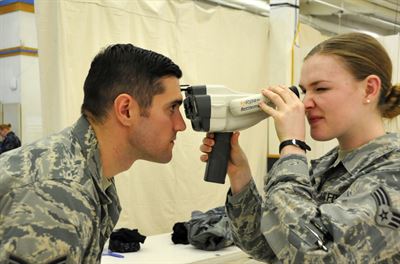
Senate’s NDAA admonishes DoD for failure to obey prior health reform mandates
Senate's NDAA says DoD has failed to deliver on a military health reorganization Congress ordered two years ago, and mandates more specific reforms.
Best listening experience is on Chrome, Firefox or Safari. Subscribe to Federal Drive’s daily audio interviews on Apple Podcasts or PodcastOne.
The $717 billion Defense policy bill overwhelmingly approved by the Senate Monday night includes several provisions that are designed to prod the Pentagon into implementing management reforms Congress passed in the 2017 version of the annual legislation, indicating that the Senate believes DoD is dragging its feet in at least a few areas of serious concern on Capitol Hill.
Among them: Senators accused the department of effectively stonewalling a congressional directive to reorganize the military’s health system. They now think it’s time to get much more prescriptive.
The 2017 bill ordered DoD to consolidate the administration of the more than 400 hospitals and clinics currently run by the Army, Navy and Air Force into a centralized management structure within the Defense Health Agency.
But in subsequent reports to Congress on how it’s complying with the law, DoD said it intended to set up a “compenent model” in which the military treatment facilities would ultimately report to the DHA director, but only through intermediary organizations that would still be controlled by the military services.
Lawmakers interpreted that plan as a thinly-veiled attempt to preserve the status quo, which they believe contains too many layers of management and makes the overall military health system difficult to coordinate.
“The department has again failed to provide a credible, detailed plan” to implement the 2017 law, members of the Senate Armed Services Committee wrote in a report accompanying their version of the 2019 NDAA. “In the committee’s view, the plan fails to maximize interoperability as it does not fully integrate the medical capabilities of the services to enhance joint medical operations. The plan maintains the services’ medical departments and establishes new, stove-piped service commands whose responsibilities would be to oversee medical force readiness and to provide administrative support to military medical personnel, a function that could otherwise be effectively provided by other units reporting directly to the services’ line commanders.”
Latest Defense News
In response, the Senate bill would completely eliminate the top-level health care administrative organizations within the military departments — the Army Medical Command, the Navy Bureau of Medicine and Surgery and the Air Force Medical Service — and transfer all of their personnel to the Defense Health Agency.
From there, the bill would direct DoD to start organizing its medical system by geographic areas instead of by military service. It would create three joint “health readiness regions” in the continental U.S. and two more overseas.
The commanders of those regions, who would report directly to the DHA director, would need to create “regional hubs” at major military treatment facilities “to provide complex, specialized medical services.”
The bill would leave the positions of the military services’ surgeons general intact, but it would significantly roll back their responsibilities. It would restrict the military services’ medical role mostly to recruiting and training medical staff, ensuring that medical teams are ready to deploy to military operations, and providing logistics support for medical deployments.
The Senate in particular has had a long interest in consolidating military health management within DHA.
A provision in that chamber’s 2017 NDAA would have stripped the military services of their medical responsibilities almost entirely, but in a final compromise with the House, Senators agreed to only consolidate the management of brick-and-mortar military treatment facilities.
But language in this year’s bill makes clear that lawmakers do not believe DoD has given serious attention to even that more-limited mandate.
“The [department’s] plan would not fully eliminate duplicative activities carried out by the Defense Health Agency and the services’ medical departments,” Senators wrote. “For example, the plan would reduce total medical headquarters personnel by only 165 full-time equivalent positions — out of 6,400 total positions — through 2023. Clearly, the plan demonstrates that the services intend to maintain many, if not most, existing medical headquarters functions and current staffing levels while disregarding the call for innovation and efficiency included throughout the Department’s National Defense Strategy.”
In a separate section of the bill, lawmakers outline specific duties they want the DHA director to perform under the reorganized health apparatus, including:
- Direct, control, and serve as the primary rater of the performance of commanders or directors of MTFs
- Direct and control any intermediary organizations between the Defense Health Agency and MTFs
- Determine the scope of medical care provided at each MTF to meet the military personnel readiness requirements of the senior military operational commander of the military installation
- Determine total workforce requirements at each MTF
- Direct joint manning at MTFs and intermediary organizations
- Establish training and skills sustainment venues for military medical personnel
- Address personnel staffing shortages at MTFs
- Approve service nominations for commanders or directors of MTFs
Read more of the DoD Reporter’s Notebook.
Copyright © 2024 Federal News Network. All rights reserved. This website is not intended for users located within the European Economic Area.
Jared Serbu is deputy editor of Federal News Network and reports on the Defense Department’s contracting, legislative, workforce and IT issues.
Follow @jserbuWFED





